There are many ways to determine the age of antique furniture, such as the joinery techniques and the thickness of the veneer work. Brassware shapes are helpful indicators of changing interior design fashion throughout particular decades, if they are original to the piece this will help us to precisely assess the date of a chest of drawers or cabinet for sale purposes or historic investigation.

This article will cover some of the handle shapes you may come across from the late 17th century onwards, including Chippendale designs and neoclassical styles.

Is my brassware original?
Over time handles may have been changed due to deterioration or a change in fashion. You can look for signs of this by opening drawers and looking around the area for holes that do not seem to serve a purpose. You can also look for markings on the inside that suggest old holes have been hidden behind exterior veneers.
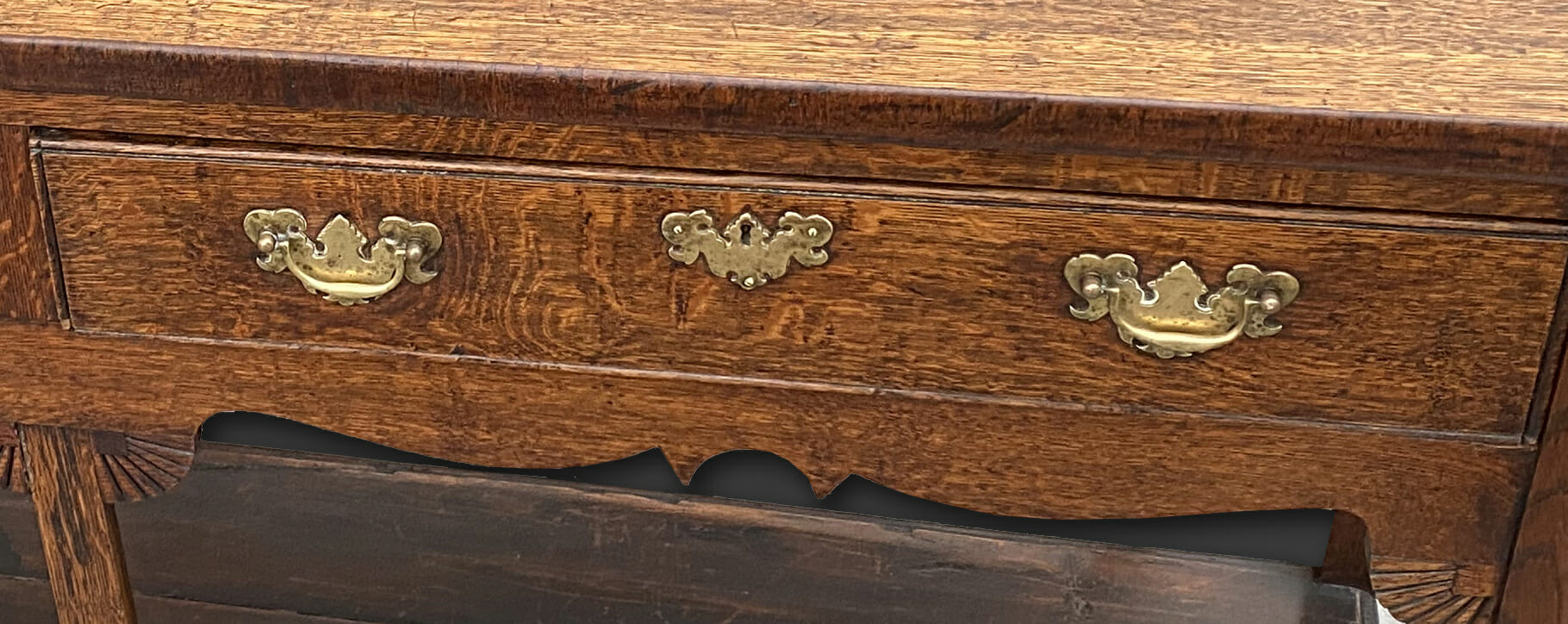
It is very common to find that handles have been changed or replaced over time, especially on older pieces during the 19th century. If you believe that the handles are not original, you can investigate the wooden joinery and thickness of veneers to assess age – typically the more machine-cut it appears, the later it will be. Our team of experts are always happy to guide your examination if you have any queries.

Dating antique furniture screws
You can also look for clues in the screws used to secure brass handles. The head of an older screw will be less uniform and off-centre due to being manufactured by hand. Handles from the late 17th century onwards were secured with pomels and nuts, antique pomels were cast from a single piece of brass, with the grooves only running halfway up the length. The nuts used to attach antique screws will be irregular in shape and circular, whilst modern nuts are hexagonal and uniform.

Late 17th century brassware
These shapes may be from the late 17th century or early 18th century. Before the industrial revolution, screws and fittings were made by hand, so if they appear not to be uniform in size and shape this may indicate pre-19th century furniture. The surface of the brass moulding may also not be entirely even due to sand casting techniques used in its production. William and Mary style furniture may include drop handles with a flat base. Below are typical styles from the 17th century or early 18th century.
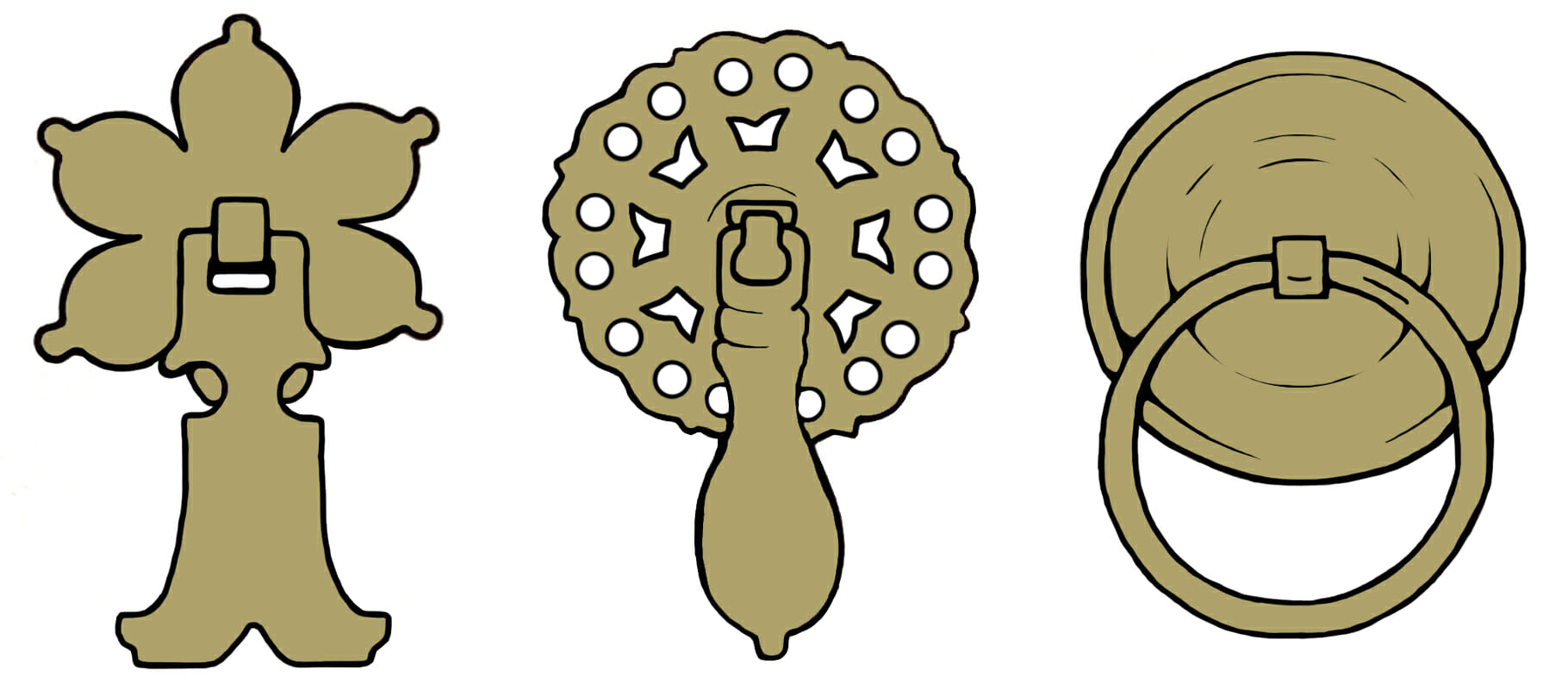
18th century brassware
These designs include fashionable baroque shapes, they may also be in the handle shape that we still use today with a moveable central rod that has two endpoints attached to the furniture. Like 17th century brass, it may also be uneven in texture and the screws will appear to be handmade if they are original and have not been replaced from the 19th century onwards.
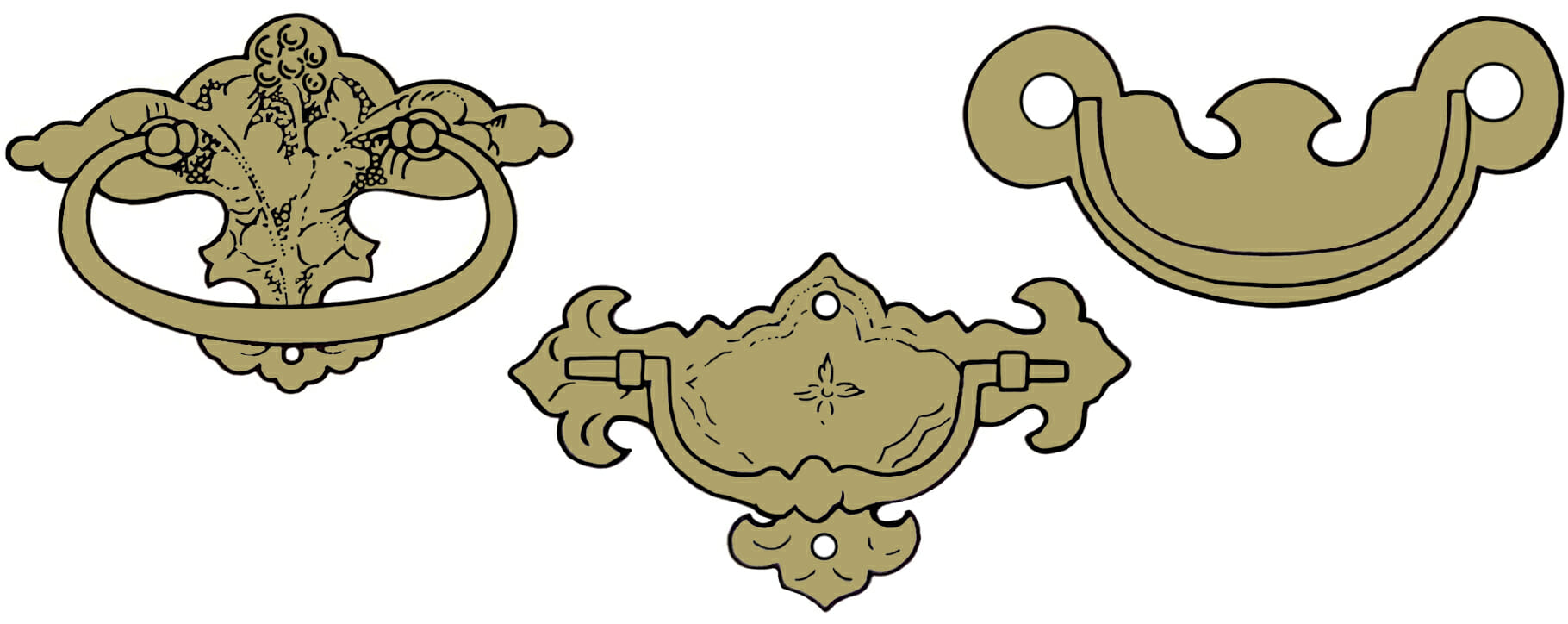
Above are examples of early 18th century brass handles.
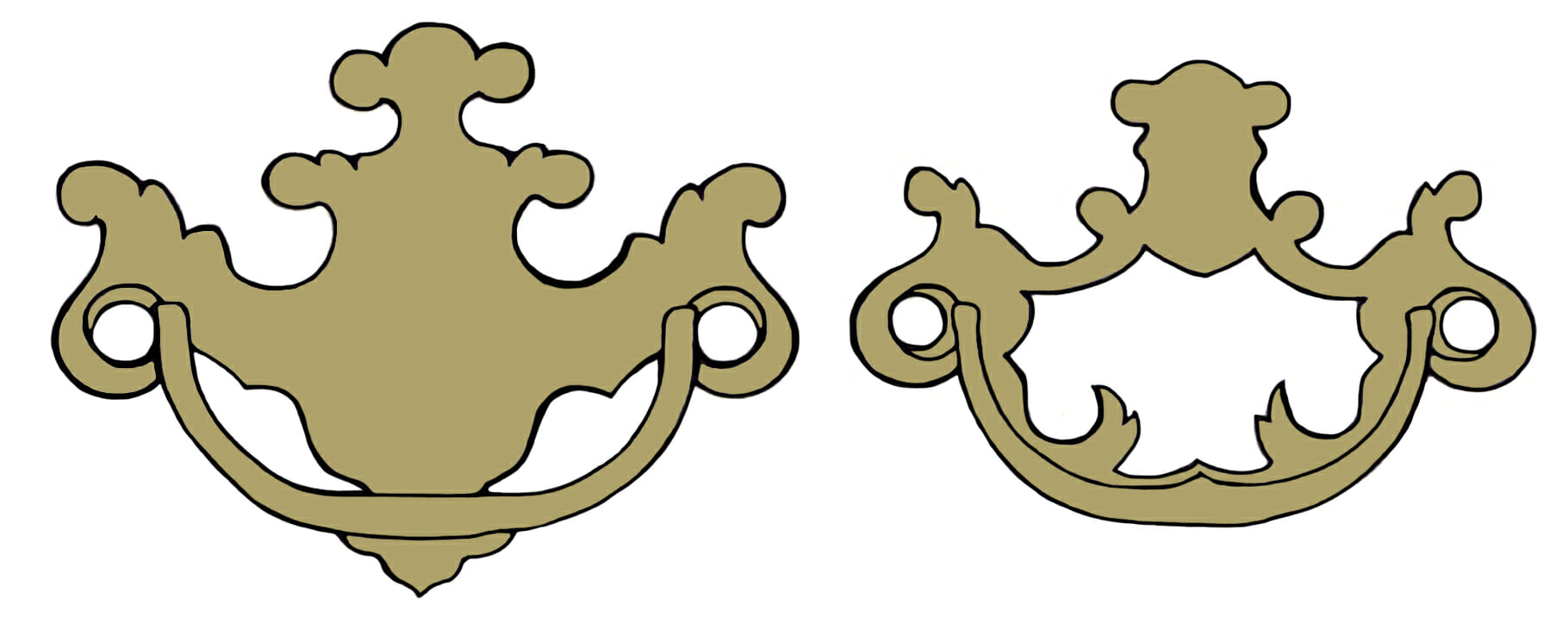
Later in the 18th century, the process of creating screws and brass casts changed, allowing for a smoother finish. They also began adding copper to the brass moulding. Copper brassware may appear to be redder in tone than in prior examples. Above and below are handle styles from the mid 18th century.

19th century brassware
Late 18th century and early 19th century brassware may be inspired by neoclassicism, including lion heads and classical motifs. Screws and finishes may now appear to be smoother and much more uniform in size and shape, due to the industrial manufacturing that was now available.
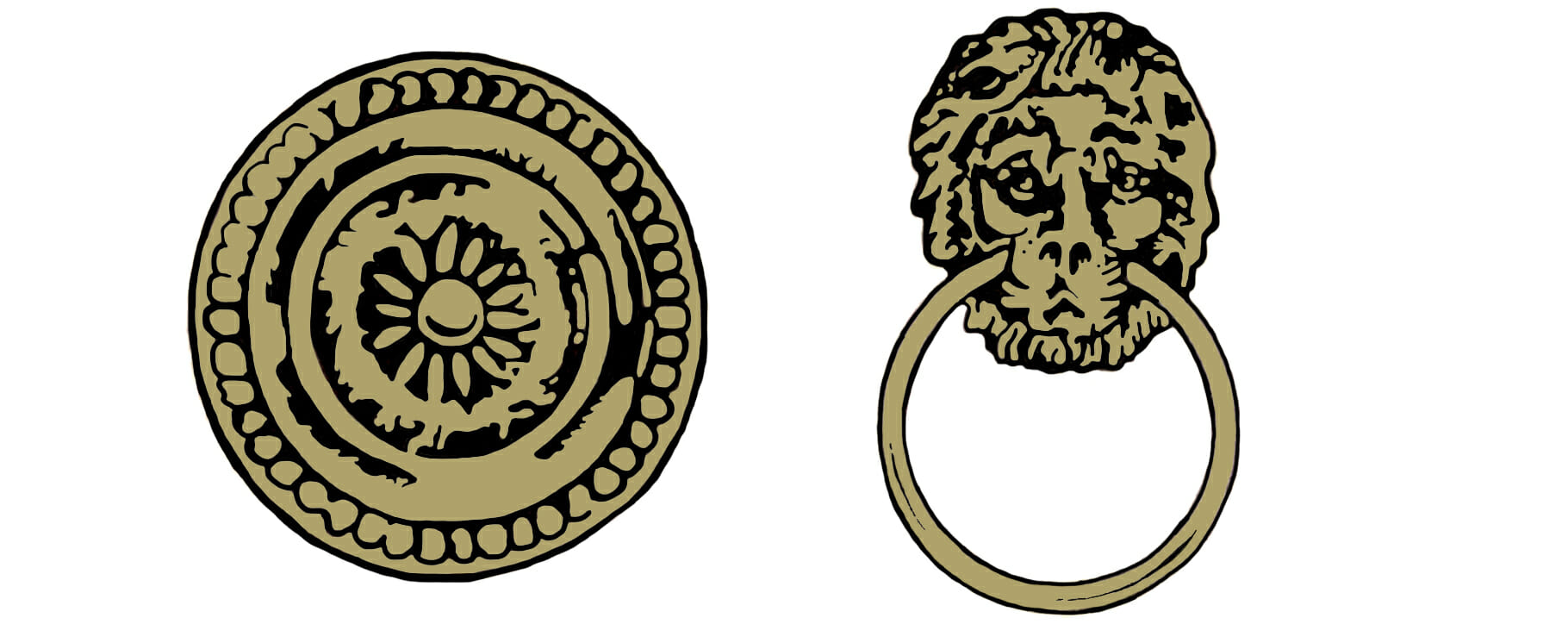
In the late 19th century screws began to be formed from steel rather than iron. Above and below are examples of late 18th century and early 19th century brassware.
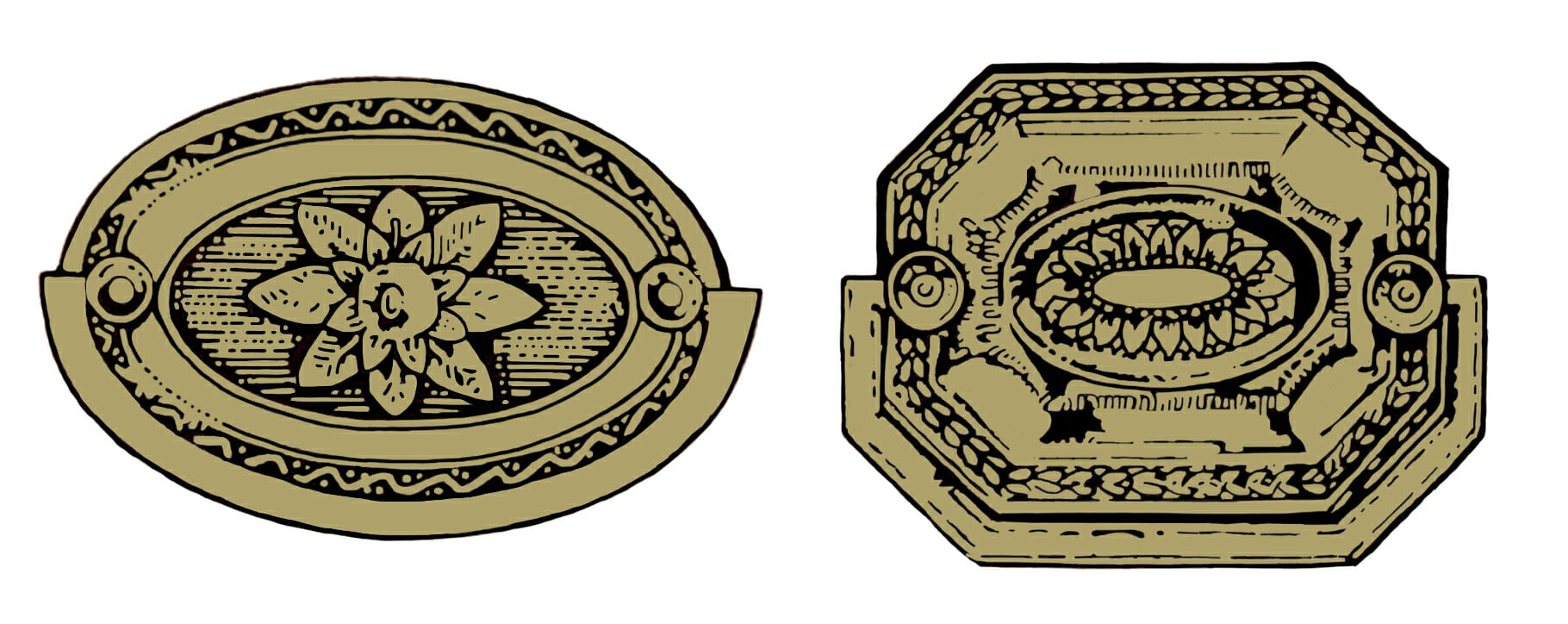
How can we help?
Our team can assist in the restoration of original brassware or the removal of deteriorated handles to fit historically appropriate replacements from sourced materials.
Please email us via [email protected] or call 0207 112 7576






